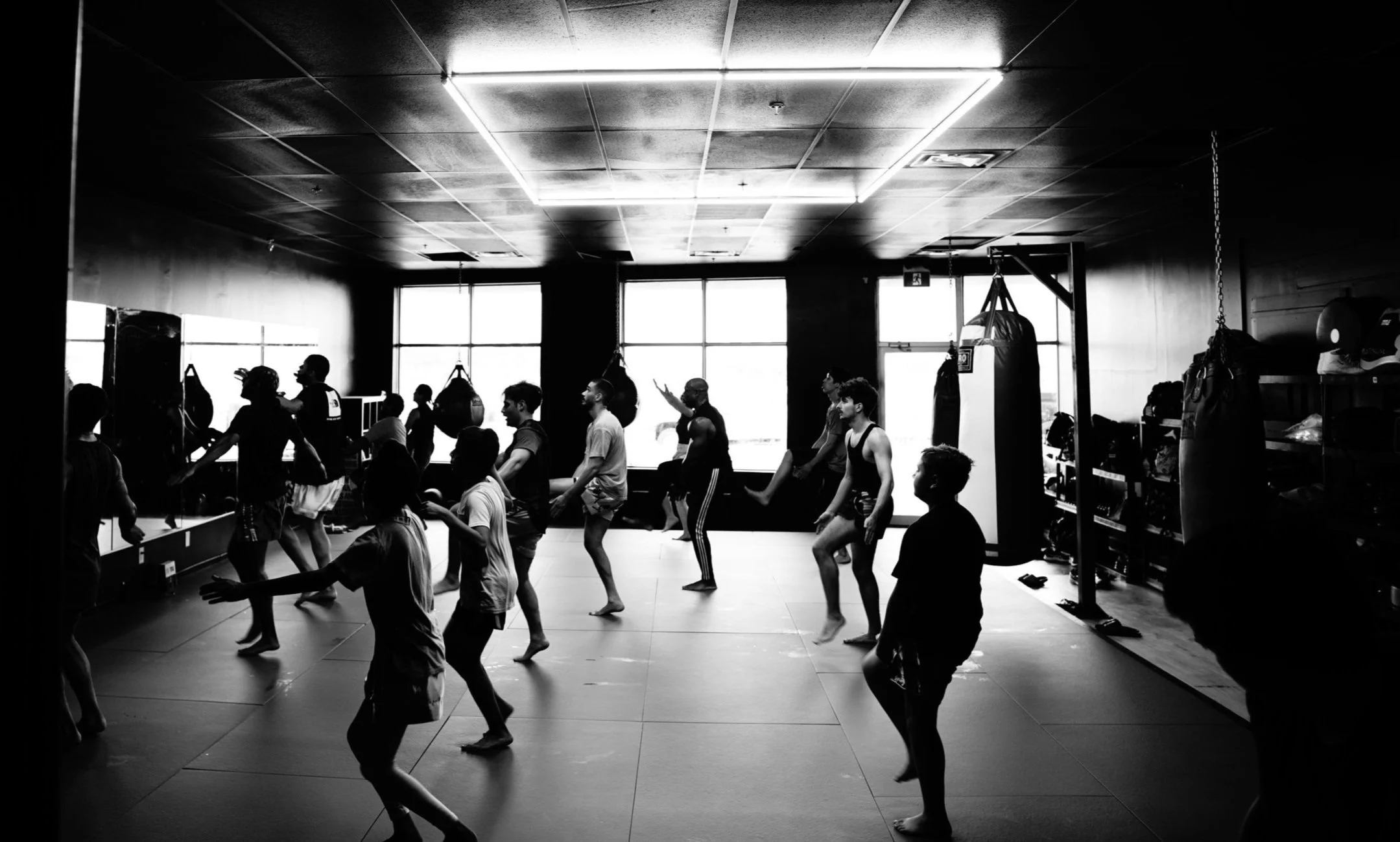Key Moments in a Class
A communal martial arts school should focus on serving everyday students. This involves creating an effective system and a positive attitude to ensure a productive and welcoming training environment for everyone, regardless of their experience level. Therefore, instructors need to cultivate a presence that promotes clarity and trust throughout different phases of a class. Below is a template for key moments in leading a fundamentals class.
I. The First Half of Class (Strength & Conditioning)
First impressions matter. Whether you are training the same or a new batch of students, set the right tone for everyone at the start of the class.
-
IDENTITY (I): Be a good and observant host. Make eye contact, smile and greet all students. Once you have a sense of who’s in your class, take note of their energy regardless of their experience level (e.g. a student who looks very ready/ eager is a 10, while a student who looks drained/anxious is a 1). From there, establish an average number from the class (e.g., there are twenty students with an energy level of 7 and up, while four students are under 5). Once you know your median number, you can determine how to start the workout so majority of students can finish on a high energy level.
OUTCOME (O): Create an environment where students feel seen, heard and matter. Even if they may not always perform at their best, a positive community encourages students to work hard no matter their outcome or experience level.
WHERE TO BE ON THE MATS (W): If students are waiting for the previous class to finish, make sure you can be seen on the mats or near them at least 5 to 10 minutes before the start of the class. This gives you ample time to greet and converse with a majority of the students coming in.
-
IDENTITY: Commander. Provide clear and direct leadership while performing the workouts.
OUTCOME: Challenge physicality and technique through a variety of movements.
WHERE TO BE ON THE MATS: To demonstrate the drills, be front center so a majority of the students. In between the drills, walk between the rows (front, middle, and back) to correct and compliment students’ efforts.
-
IDENTITY: Supporter. Manage choreography and quality of movement.
OUTCOME: Encourage healthy socialization and independence. Good finishers are a feat of strength and rites of passage to allow students to celebrate each other’s efforts.
WHERE TO BE: Walk around groups and give encouragement from the sidelines (borders and corners).
II. The Second Half of Class (Technical Skill+Philosophy)
A good workout should conclude with students warmed up, both physically and mentally engaged to learn more.
-
IDENTITY: Storyteller. Introduce the drill provocatively by capturing their interest no matter their experience level through similes, metaphors and analogies.
OUTCOME: Build students’ trust in you as a martial artist by showing them you are more than a trainer.
WHERE TO BE: Center middle (with students around you)
-
After introducing and demonstrating the thesis, now it’s time to let the students apply it.
IDENTITY: Teacher. Lead the class by using the appropriate modality (e.g. pads, bags, shadowbox, hand to hand) to teach the thesis. As you teach, be detail-oriented, use more direct/objective language and avoid analogies to precisely deliver instructions.
During static drills, lead the count and observe students’ form. Correct the worst thing first, and prioritize one thing only. And don’t forget to compliment good work :)
OUTCOME: Students learn the correct form, timing, and attitude of the drill.
WHERE TO BE: Start center middle and move through lanes of partners to see everyone. Return to center middle to address general corrections.
-
Unlike the static drills which are led by the instructor, the dynamic drills are led by the partner (e.g. padholder). Similar to the workout finisher, this is a chance for students to bond and discover their skills together.
IDENTITY: Supportive sports commentator. Provide non-stop quick-hitting encouragement and guidance so students improve without stalling their momentum.
OUTCOME: Same as workout finisher—with an emphasis on students improving their form, timing and attitude while challenging their repertoire to repeat maximum effort for a short duration of time during the finisher.
WHERE TO BE: Be in borders and lanes so students can feel more independent and you are within earshot to provide feedback and encouragement.
-
IDENTITY: Philosopher. Good teachers can translate the technical lessons of a subject into life lessons. By connecting what was taught in class to what students experience outside of it, students feel more connected, seen and heard.
OUTCOME: Make students excited to train again by provoking/challenging them with an anecdote. A compelling conclusion can also spark curiosity in those eager to learn more or share their own stories with you— allowing you to connect with your students.
WHERE TO BE: Center/front of the room so you can deliver your message to everyone.


